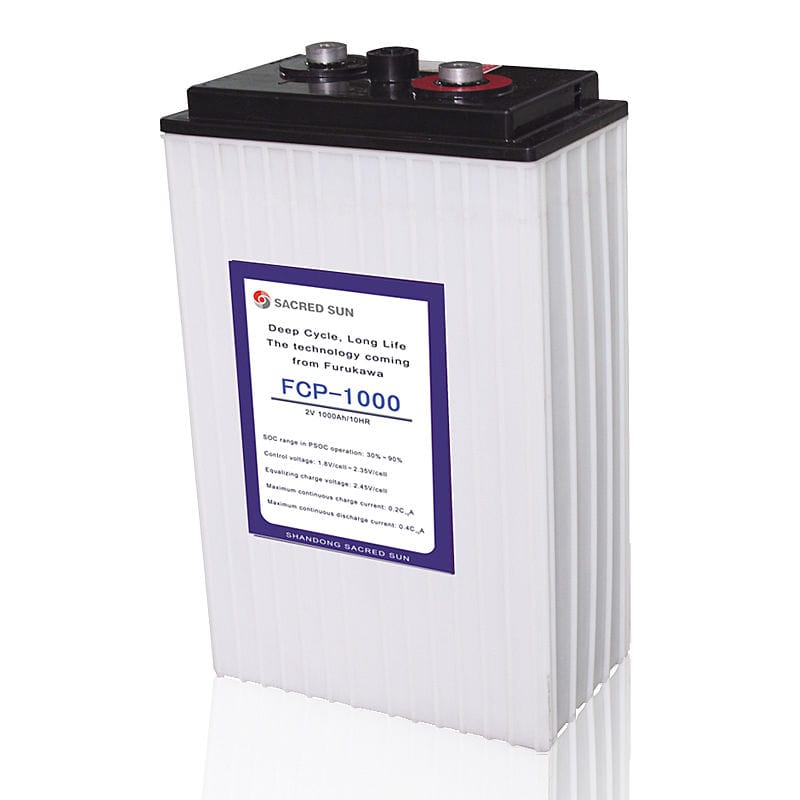LiFePO4: Lithium Iron Phosphate Batteries
LiFePO4 batteries have a very constant discharge voltage. System voltage doesn’t fluctuate during discharge until the cell is exhausted. This allows the cell to deliver virtually full power until it is discharged.
LiFePO4 batteries are relatively lightweight compared to other batteries, but they are very expensive. The challenge for using these batteries effectively in renewable energy systems is making sure the other equipment is able to communicate directly with the internal BMS of the lithium batteries. LiFeP04 batteries have a high round trip efficiency.
Lead Carbon Batteries 
Super Long Cycle Life: Lead Carbon batteries have a 50% depth of discharge, giving you more usable power in a smaller battery bank, in comparison to regular lead acid batteries, 30% depth of discharge is typical.
Leading Lead Carbon Technology improves the charge acceptance ability, reduces the negative plate sulphation, and along with the deeper depth of discharge combine to make lead carbon batteries more suitable for PSOC applications. Use of the Lead Carbon battery in an application where full battery recharges aren’t always possible, like off-grid, can maximize your overall cycle life by up to 4 times versus a traditional deep cycle battery.
Safety: Lead Carbon offers all the safety and convenience of an AGM battery with comparable power to lithium batteries
Generally Speaking:
- Flooded type (wet cells) can lose up to 12% per month due to self-discharge while AGMs, Gel cells, and Lead Carbon lose only 1-3% per month.
- Lead acid batteries are good for wide temperature ranges
- Lithium batteries need a controlled environment – not below freezing
- Some Lead Carbon batteries are suitable for colder temperatures to – 20°C (See Our SWE12-100 & SWE12-150)
- All batteries perform better at a constant temperature between 10°C and 25°C.Please Note:
- We use the 10 & 20 hour discharges rate for battery calculations as this is the realistic amount of time it will take to discharge a battery. Some manufacturers use the 100 hour rate which we feel is not practical in real life situations.
- In our Solar Kits, we list both the Battery Capacity and the Daily Useable Capacity as no battery should be fully discharged.
